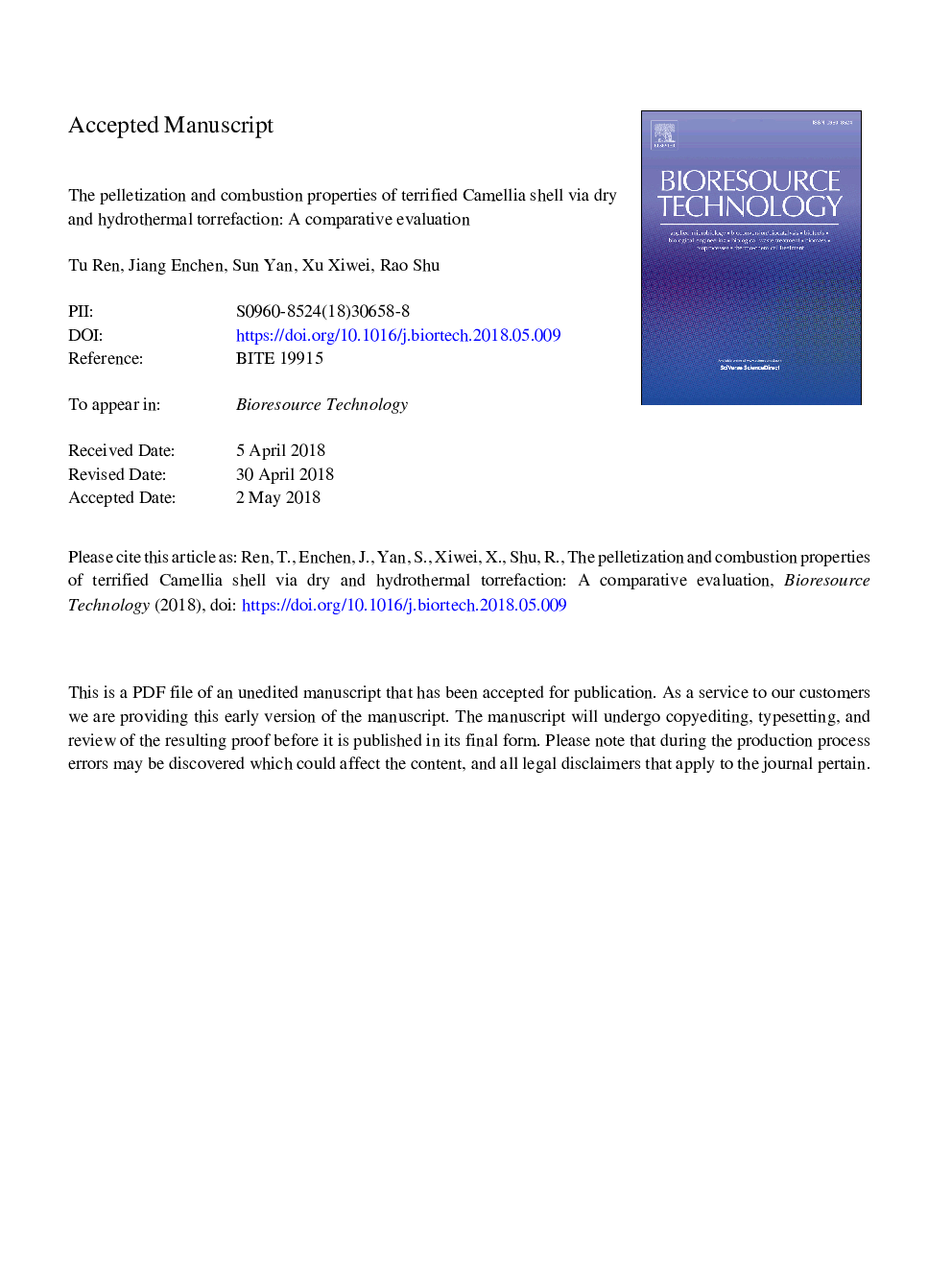| Article ID | Journal | Published Year | Pages | File Type |
|---|---|---|---|---|
| 7066515 | Bioresource Technology | 2018 | 36 Pages |
Abstract
The torrefaction performance and properties of torrefied CS (Camellia shell) bio-char obtained via dry and hydrothermal torrefaction have been compared as well as pyrolysis and combustion properties. And making of torrefied pellets and their properties such as pellet density, Meyer hardness, and energy consumption are also investigated. The results showed that dry torrefied bio-char had higher energy and density at 220â¯Â°C and decreased significantly with temperature, while hydrothermally prepared bio-char had stable energy and mass yield with temperature. The coalification status of hydrothermally bio-char is similar to that of sub-bituminous coal. The pellet formed from dry terrified bio-char via quart tube in 220â¯Â°C with high pellet density (1048â¯kg/m3) and low energy consumption (17.6â¯KJ/kg) in spite of low the Meyer hardness (6.8â¯N/mm2). As for the process kinetics, the activation energy via dry torrefection with auger showed lower activation energy 43.26â¯KJ/mol as well as lowest ignition temperature (290â¯Â°C), compared to hydrothermal torrefaction.
Related Topics
Physical Sciences and Engineering
Chemical Engineering
Process Chemistry and Technology
Authors
Tu Ren, Jiang Enchen, Sun Yan, Xu Xiwei, Rao Shu,
